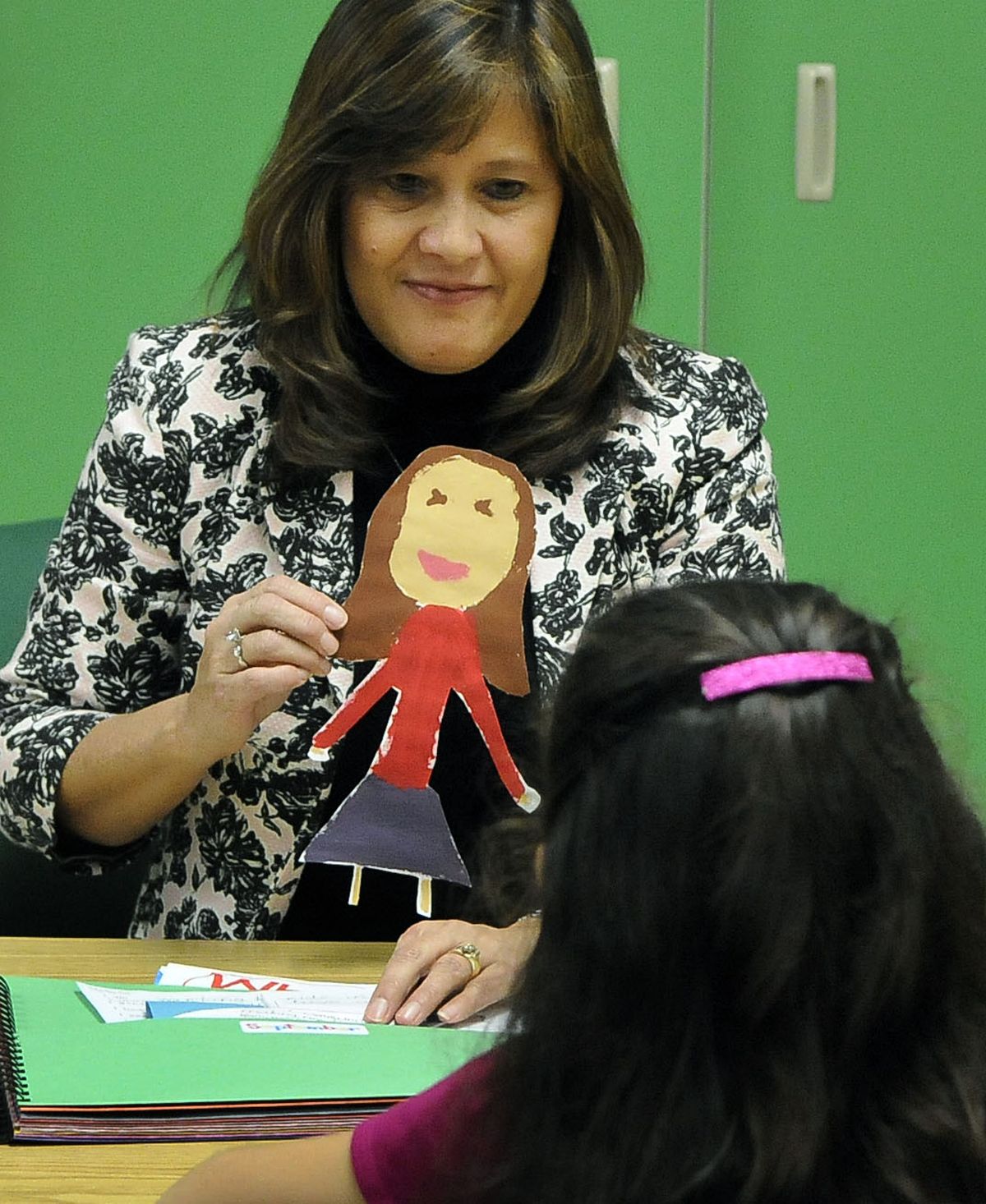Spokane elementary schools switch to number grades

Most elementary students in Spokane Public Schools are seeing their new report cards for the first time this week; instead of A, B, C, D or F, it’s 4, 3, 2 or 1.
The new number system, called “standards-based grading and reporting,” is based on how well the students meet state and national standards in reading, writing, math, science and social studies.
Instead of one letter grade for a whole topic, the numbers correlate to specific elements of learning within that topic. Instead of a grade for “writing,” for example, a student might receive separate grades for “writes in complete sentences” and “understands punctuation and capitalization.”
After three years of testing at six pilot schools, the new system was implemented at all elementary schools in the district this year.
“The (previous) report cards were old and generic,” said Tammy Campbell, a teaching and learning services specialist who led the change. “They didn’t align with the standards or assessment being taught.”
Effort is graded separately from topic achievement, students are rated individually rather than compared against one another, and every grade, first through sixth, has a different report card with different standards.
When Ken and Nely Barton recently attended a conference with their 8-year-old daughter’s teacher at Woodridge Elementary School, they were more curious than concerned about the new grading system.
“This is less subjective,” Ken Barton said. “I think that’s good. A student can do well in one grade because a teacher’s easier or likes them and not in the next. This makes it clear.”
Barton’s daughter, Natalie, seemed to understand it well.
“What does a 4 mean?” the third-grader’s teacher, Linda Sams, asked. Natalie replied: “You are really good at it, and you can help teach it.”
The official version: 4 means consistently extending knowledge; 3 means meeting standards; 2 means approaching standards; and a rating of 1 means well below standards.
Coeur d’Alene and Central Valley school districts use similar standards-based reporting and grading, but only in kindergarten through third grade.
The new report cards for Spokane Public Schools have been in the works for about eight years. Spokane school officials and a committee looked at the experiences of other districts such as Vancouver, Tacoma and Central Kitsap, and combined that with “our research and our own teachers’ input to come up with what is now in place,” Campbell said.
Karen Krantz, a teacher at one of the pilot schools, Adams Elementary School, said the new system took a lot of preparation in terms of “reading and professional development.
“It was really a shift from the traditional grading. But now it’s so much easier. When you are looking at a standard, you know it aligns, nationally and in the district. It gives me confidence that I’m teaching the right thing.”
Natalie Barton’s teacher, Sams, said “you are really focused on what you are teaching.”
The new system also helps students understand what they’ve learned and what they need to learn next, Krantz said. Parents seem to like it, too. In a survey of those involved in the pilot program, 98 percent of parents said “it was clearer to them where their child stands,” Campbell said.
“The last one (report card) seemed like the information got lost,” said Nely Barton. “This seemed more condensed.” But the main difference – “Natalie was able to understand the whole conference.”